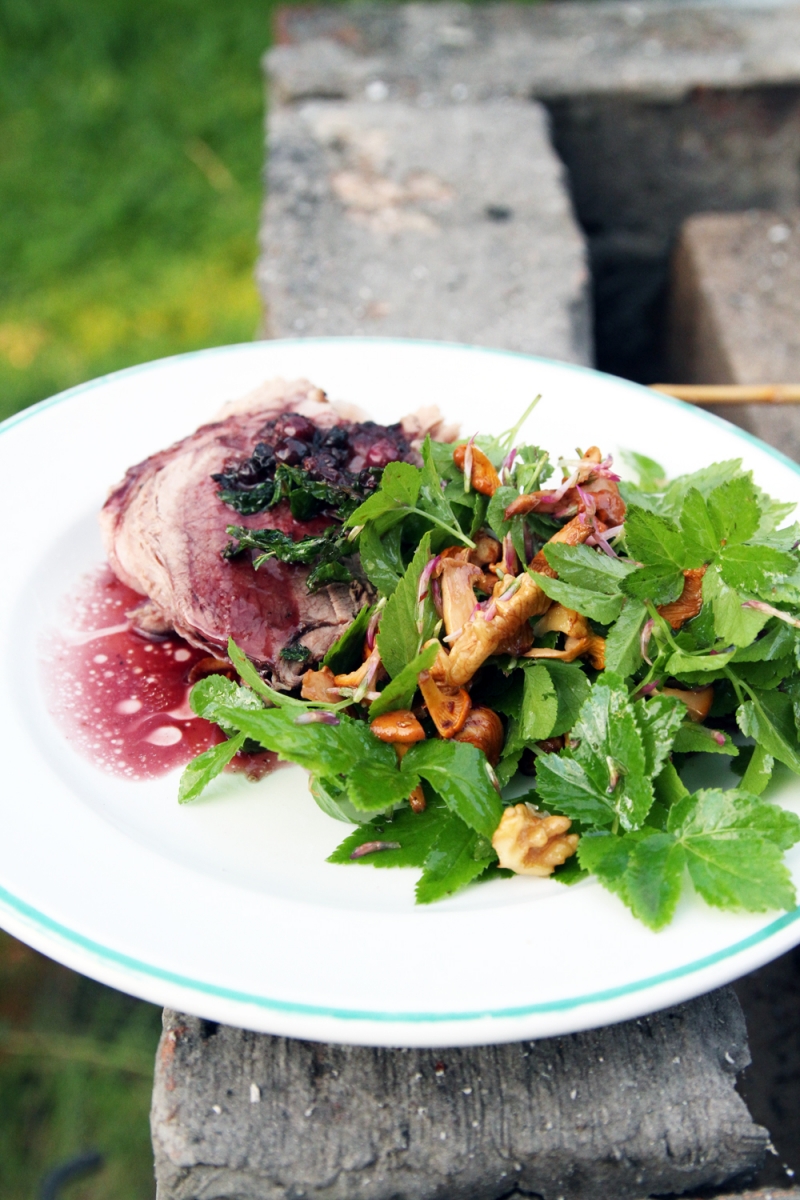Column
Cooking pit
— And a wild boar
Cooking pits are an old traditional way of preparing food, and pits around Scandinavia has been dated back as far as the stone age. It basically means that you dig a large hole in the ground, big enough to fit what you are preparing. Fill it with rounded rocks, and light a fire. Keep feeding the fire for a couple of hours, and the rocks will heat up enough to prepare large quantites of food.
Wild boar was provided to us by a friendly farmer named Pål Pedersen, who raises wildboar very close to Oslo, in Vestby. They were slaughtered when they came to us, but we had to trim them down into managable parts, since different cuts require different cooking times.
When the pit is ready for cooking, remove a layer of rocks and place your parcels of wrapped meat ( traditionally they used leaves for wrapping, but we used aluminium foil ) and load the rest of the rocks on top. Cover the pit with peat and dirt and leave it until the meat is ready. It`s hard to estimate cooking times since different pits may vary in temperature.
For this evening we had two pits, one for large cuts and one for smaller ones.
We pulled the smaller cuts of meat out after an hour and a half, and out came succulent, tender wildboar meat, and some of the parts even had a crackling crust on them.
The larger parts stayed underground for anouther half and hour. Done!
Thanks to the team, Jan & Tove Svartsund for helping out with everything, and letting us digg a large test hole in the ground at their cabin, and Kjartan «the archeologist» Fønstelien for helping out and giving us valuable knowledge on the tecniques of cooking in the ground.
We built the evening’s menu on what we thought a Norwegian wild boar would like to eat when it rummaged around in the Norwegian forest – mushrooms, wild berries, nuts and leaves.
Wild boar rubbed with posj
Blueberry and juniper sauce
Forest salad with chantrelles and smoked nuts
Bread with fresh cumin seeds and carrots
The Wild boar
Leave skin and fat on the wildboar.
Crush the posj and mix in some oil.
Rubb the meat with posj oil, salt and pepper.
Wrap in at least 5 layers of aluminium foil.
Blueberry and juniper sauce
4 persons
1l game stock
500 ml dry apple cider
200 g of blueberries
some juniper berries
salt & pepper
Reduce the stock and cider to 1/4.
Thicken with the blueberries.
Crush the juniper berries with a pessel and mortar (use a cloth so you can pull them aside before serving).
Salt and pepper to taste.
Wild salad.
4 persons.
Salad
We used a mix of salad with a nutty flavours and goutweed.
200 g of chantrelles100 g of smoked nuts, we use both hazelnuts and walnuts.
Clover flowers.
–
Mild olive oil to dress.
Wash, dry and tear the salad.
Smoke the nuts lightly, we used apple wood for the smoking.
Cut the chantrelles in small pieces, and fry them in a dry pan, and a lump of butter and salt at the end.
Sprinkle clover flowers on top garnishing.
Stick Bread
4 persons
500g of flour, we mixed fine and coarse flour
2 tbs baking soda
2 tbs sugar
1 ts salt
100 ml of olive oil
200 ml of luke warm water
–
Fresh cumin seeds
Carrot
Salt – good quality in large crystals
Mix the dry ingredients.
Poor in the water and oil.
Work the dough until it is smooth and elastic (about 7 minutes by hand).
Shread and mix in carrots, cumin seeds and salt.
Wrap small pices around a stick and cook on a fire. the bread is done when it`s easy to pull of the stick.
Photos: Anders Valde and Magne Ilsaas
Text and Chef: Magne Ilsaas






